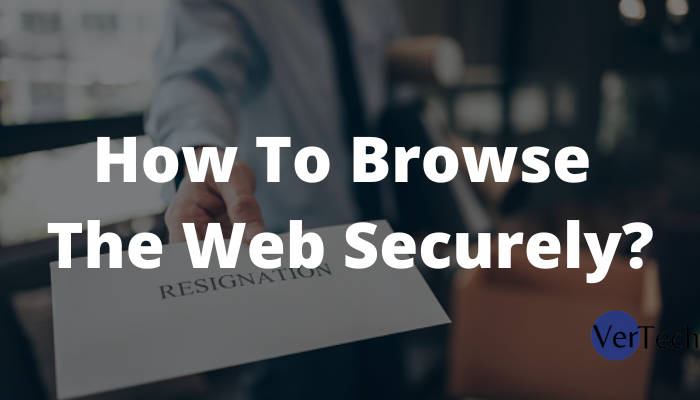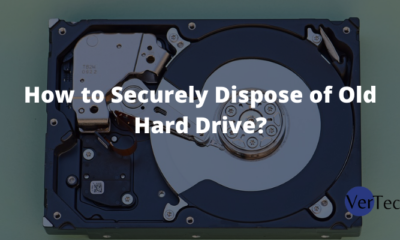Security
How To Browse The Web Securely?

How secure is the internet where you share your personal information, including credit card details, medical records, and daily life updates, using social media apps like Facebook and Instagram? From searching about your ongoing medical condition to sharing your credit card information on so-called secure payment options, you are getting a step closer to being a victim of cybercrimes and data thefts.
Don’t believe our words? According to recent statistics, 59% of Americans report they have experienced cybercrime or in some way fallen into the hands of a computer hacker.
Everything you do on the internet can be tracked, including your everyday searches. Don’t let the internet be an unforgiving place for you. This article will look into how to securely browse the internet cautiously while not falling victim to cybercriminals and snoopers.
-
Do not click on ads. ANY ADS.
Ads are bad. Even ads on Google can redirect you somewhere you do not want to go. Don’t get lazy if you see an ad, Google search but never click links on the top of the page under the AD’s heading. Pay attention to what your browser asks you and all pop-ups and warnings. Sometimes while browsing a site, you will come across a pop-up asking if you want to do this. Make sure you read it before checking Yes. Most malicious viruses come from add-ons and programs that ask if you’re going to run it first, ensuring they come from a trusted publisher.
-
Never log into Your Account from a Link in an Email or Direct Message
Check the URL of the website you are logging in from before entering your user id and password. Most of the links being spread through email attempt to make you a victim of phishing – a technique to steal your user id and passwords.
-
Scan Your Computer Regularly
Suppose you regularly get infected with malware or are getting more pop-ups or spam than usual, or your computer is performing slower than normal. In that case, you need to install antivirus software on your system.
-
Use A VPN
Using a VPN is the safest way to view the internet. If you want to browse content securely through the internet, you need to connect to a VPN to access the internet and bypass geo-restricted content securely. It will not only help you surf the web securely but will also help you in staying anonymous. Most VPN services offer extensions for different browsers, so you don’t have to install any software on your computer. You can easily add any VPN extension to your web browser to access the web anonymously. Google Chrome users can install a VPN Chrome extension, and Mozilla Firefox users can use the Firefox VPN extension.
-
Don’t Trust USB Flash Drives
Never trust a flash drive given to you by any third party because if it is used on a computer with malware and you run it on your device, you can get infected. To avoid this, ensure to run a virus scan on that particular USB device before accessing any data. You can do this by running an antivirus on your computer.
-
Never Download a FREE Game or Program
Nothing in this world is free; keep this thing in mind. Many sites like coupons.com, WeatherBug, and others would force you to download their FREE programs. NEVER, I repeat, NEVER fall victim to this. These websites and others install malicious programs in the background and send your browsing history to spammers.
-
Never Visit Websites Without HTTPS
HTTP is a non-encrypted protocol for computers. On the other hand, HTTPS is an encrypted protocol that uses Secure Sockets Layer (SSL). Websites that begin with HTTPS are primarily secure and can not pass your information to sniffers. To identify a secure website, you can see a lock sign on the left-hand side of the URL, whereas an exclamation mark represents a compromised connection where the site is not using a private connection.
Closing Note
We have compiled this guide with the sole intention of keeping you safe online. While nothing can compare the use of antivirus software and VPN, other ways provided above also make a huge difference in making your internet browsing experience safe and secure.
-
Blog1 year ago
MyCSULB: Login to CSULB Student and Employee Portal – MyCSULB 2023
-
Android App3 years ago
Cqatest App What is It
-
Android1 year ago
What Is content://com.android.browser.home/ All About in 2023? Set Up content com android browser home
-
Software2 years ago
A Guide For Better Cybersecurity & Data Protection For Your Devices
-
Latest News2 years ago
Soap2day Similar Sites And Alternatives To Watch Free Movies
-
Android2 years ago
What is OMACP And How To Remove It? Easy Guide OMACP 2022
-
Android3 years ago
What is org.codeaurora.snapcam?
-
Business2 years ago
Know Your Business (KYB) Process – Critical Component For Partnerships



























